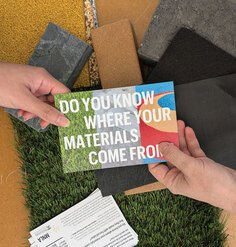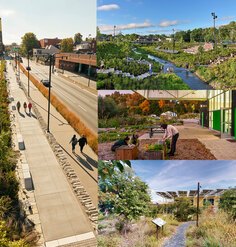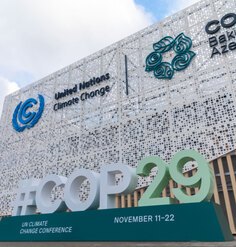From the Field: Piecing Together the Performance of Streetscapes
By Yue Zhang, MLA Candidate and Pamela Blackmore, BLA Candidate, Utah State University
Henry Wadsworth Longfellow once proclaimed, “I have an affection for a great city. I feel safe in the neighborhood of man, and enjoy the sweet security of the streets.” We likewise have developed an appreciation for great streets in our research which has focused on four top-notch streetscapes. They are not merely the linear corridors that connect destinations. A well-designed street improves recreational opportunities, promotes the surrounding economy, provides art and social spaces, saves energy for the city, improves public safety, and helps solve stubborn environmental problems. It is intriguing to see the impact a street has on surrounding communities.
With the power that streets have, many parties must be involved in the design. The evaluation of a streetscape also becomes an intertwined, multidisciplinary effort. This process becomes one massive jigsaw puzzle, with everyone bringing a piece. However, unlike a traditional puzzle, the pieces do not come prepackaged. Collaboration becomes essential as we hunt for pertinent data. The Case Study Investigation (CSI) program is not merely student-faculty research; instead, it is a team effort of the design firm, client, users and visitors, government agencies, the research team, and LAF (and the list goes on…). As you can imagine, having discussions with everyone that contributed to an incredible design is exhilarating! Many people bring valuable pieces to the puzzle table.
Once we’ve found the pieces, analyzing them is the most challenging, yet rewarding part. It is this stage where the performance benefits become apparent. The projects are not analyzed against some standard set for all. Instead, a project is deemed successful based on the original objectives the design set out to fulfill. This analysis is taking evidence-based design to a new dimension, and we are learning new methods to gauge the quality of our own work. This is the reason we will never approach design the same way again.
The information we’re generating can be used as evidence to justify landscape improvements everywhere. It is exciting to participate in this research, which is preparing landscape architects for the future. There are some holes in our puzzle, due mostly to time and data constraints. We will closely watch future LPS Case Study Briefs in anticipation that participants will find new methods and techniques so that everyone can see the complete picture!
Professor Bo Yang and student Research Assistants Yue Zhang and Pamela Blackmore are participating in LAF’s 2012 Case Study Investigation (CSI) program. They are documenting the performance of four streetscape projects in Colorado, California, Missouri, and Iowa. Any opinions expressed in this article belong solely to the author. Their inclusion in this article does not reflect endorsement by LAF.











